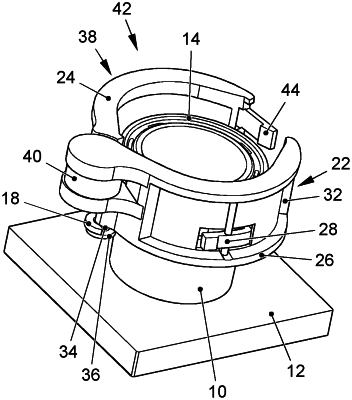| CPC F16L 23/08 (2013.01) [F16L 37/113 (2013.01); F16L 21/06 (2013.01); F16L 21/08 (2013.01); F16L 2201/10 (2013.01); F16L 2201/20 (2013.01)] | 8 Claims |

|
1. A connection device comprising
a first line portion having, at an end, a radially outwardly projecting abutment flange for butting against a corresponding abutment flange of a further line portion which is to be coupled to the first line portion, and
a ring-segment chain comprising a plurality of ring segments connected to one another in a pivotable manner in a common ring plane, wherein ring-segment ends which form the chain ends can be latched to one another to give a ring-form connection clamp,
wherein the line portion is designed in the form of a tubular connection stub with a first thread spaced apart axially from an abutment surface of its abutment flange,
wherein each ring segment has a radially inwardly projecting clamping flange and a second thread, which are spaced apart axially from said clamping flange and correspond to the first thread, and
wherein the connection stub has a first locking means that act in a radially outward direction, and one of the ring segments has a corresponding second locking means that act in a radially inward direction, which, when engaged, prevent a rotation of the connection clamp relative to the connection stub in an unlocking direction.
|